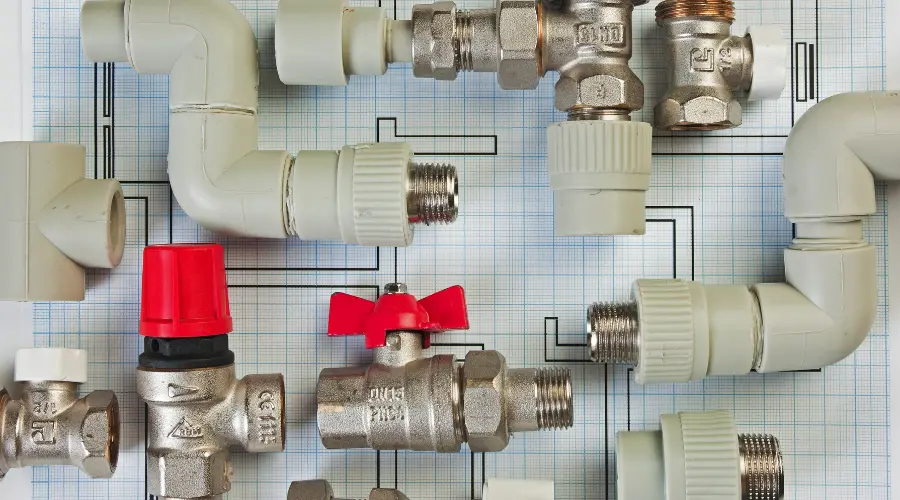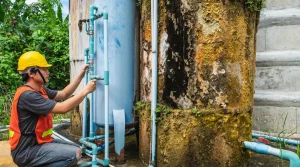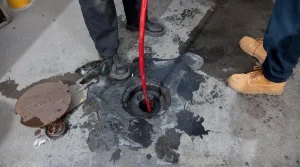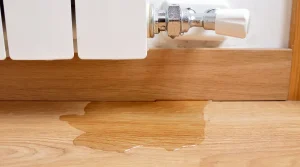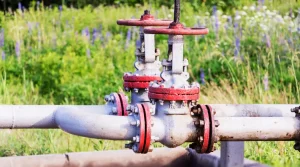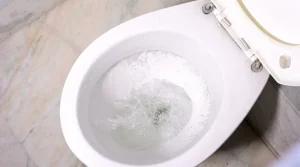In today’s world, environmental responsibility and cost savings go hand in hand. Energy-efficient plumbing fixtures offer a practical solution to conserve water, reduce utility costs, and support sustainability. This guide explores the benefits of energy-efficient plumbing fixtures and highlights nine top choices for maximum efficiency.
Key Takeaways:
- Energy-efficient plumbing fixtures help conserve water, reduce utility bills, and support environmental sustainability.
- Examples include low-flow toilets, water-saving showerheads, and touchless faucets.
- Using efficient fixtures enhances performance without sacrificing comfort.
- Nine top water-efficient fixtures provide cost savings and environmental benefits.
What Are Examples of Efficient Water Fixtures?
Energy-efficient water fixtures are designed to minimize water use without compromising performance. Here are some common examples:
- Low-Flow Toilets: Modern low-flow toilets use as little as 1.28 gallons per flush (gpf), significantly less than older models that use 3.5 to 7 gallons per flush.
- Water-Saving Showerheads: These showerheads provide a satisfying experience while using less water, typically at a minimum flow rate of 2.0 gallons per minute (gpm).
- Faucet Aerators: Small but effective, these devices attach to the end of faucets, mixing air with water to cut water usage by up to 50%.
- Touchless Faucets: Ideal for kitchens and bathrooms, touchless faucets use infrared sensors to detect hand movements, reducing accidental drips and leaks.
- Dual-Flush Toilets: These toilets offer two flush options—one for liquid waste and one for solid waste—allowing users to use the appropriate amount of water per flush.
How Does Using a Water-Efficient Fixture Help?
- Conservation of Resources: Water-efficient fixtures help conserve water, a valuable and increasingly scarce resource.
- Cost Savings: Lower water consumption leads to reduced utility bills, providing long-term financial benefits.
- Environmental Impact: Using less water reduces energy required for heating and water treatment, lowering greenhouse gas emissions.
- Enhanced Performance: Modern energy-efficient fixtures are designed to deliver performance equal to or better than traditional models.
What Type of Fixtures Use the Least Amount of Water?
The following fixtures are designed for maximum water efficiency:
- Low-Flow Toilets: Use significantly less water per flush than traditional models.
- High-Efficiency Showerheads: With a 2.0 GPM or lower flow rate, these showerheads maintain comfort while reducing water usage.
- Low-Flow Faucets: Faucets with a 1.5 GPM or lower flow rate help save water without compromising usability.
- Dual-Flush Toilets: Offering two flush options, these toilets reduce unnecessary water use for liquid waste.
Nine Energy-Efficient Plumbing Fixtures
- Delta WaterSense® Showerheads: These showerheads use 2.0 GPM or less while maintaining excellent water pressure.
- Kohler High-Efficiency Toilets: Designed to use as little as 1.28 GPF, offering powerful flushing while conserving water.
- Moen Eco-Performance Faucets: With a 1.5 GPM flow rate, these faucets use aeration technology to minimize water consumption.
- American Standard Champion® 4 Toilets: Optimized for efficiency, these toilets use only 1.28 GPF with powerful flushing performance.
- Grohe EcoJoy® Showerheads: Offering a 1.75 GPM flow rate, these showerheads balance comfort with water savings.
- TOTO Drake II Toilets: These toilets use just 1.28 GPF, ensuring both efficiency and effective flushing.
- Pfister Waterfall Touchless Faucets: Equipped with infrared sensors, these faucets reduce accidental water waste.
- Kohler K-596-CP Simplice® Pull-Down Kitchen Faucet: Featuring a 1.5 GPM flow rate, this faucet delivers high performance with reduced water usage.
- Hansgrohe Raindance® Select E Showerheads: With a 1.75 GPM flow rate, these showerheads offer a luxurious experience while conserving water.
FAQs About Energy-Efficient Plumbing Fixtures
Q: Are energy-efficient plumbing fixtures expensive?
While initial costs may be slightly higher, the long-term savings on water and energy bills make them a cost-effective choice.
Q: Do low-flow fixtures provide enough water pressure?
Yes, modern low-flow fixtures are designed with technology that ensures optimal pressure while using less water.
Q: Can I install energy-efficient fixtures myself?
While some fixtures can be DIY-installed, it’s best to leave plumbing projects to professionals to avoid potential damage or inefficiencies.
Q: How much water can I save with efficient plumbing fixtures?
Depending on usage, households can save thousands of gallons of water per year by upgrading to energy-efficient fixtures.
Q: Are there rebates for installing water-efficient fixtures?
Many utility companies and local governments offer rebates and incentives for using WaterSense® certified fixtures. Check with your local water provider for details.
Conclusion
Adopting energy-efficient plumbing fixtures is a simple yet impactful way to conserve water, reduce utility costs, and promote environmental sustainability. By investing in water-saving technology, homeowners can enjoy long-term benefits while contributing to a greener future. Take the first step today by upgrading your home with energy-efficient plumbing fixtures and experience the savings and sustainability firsthand! For more details Please contact BJC Plumbers in North Bergen, NJ

